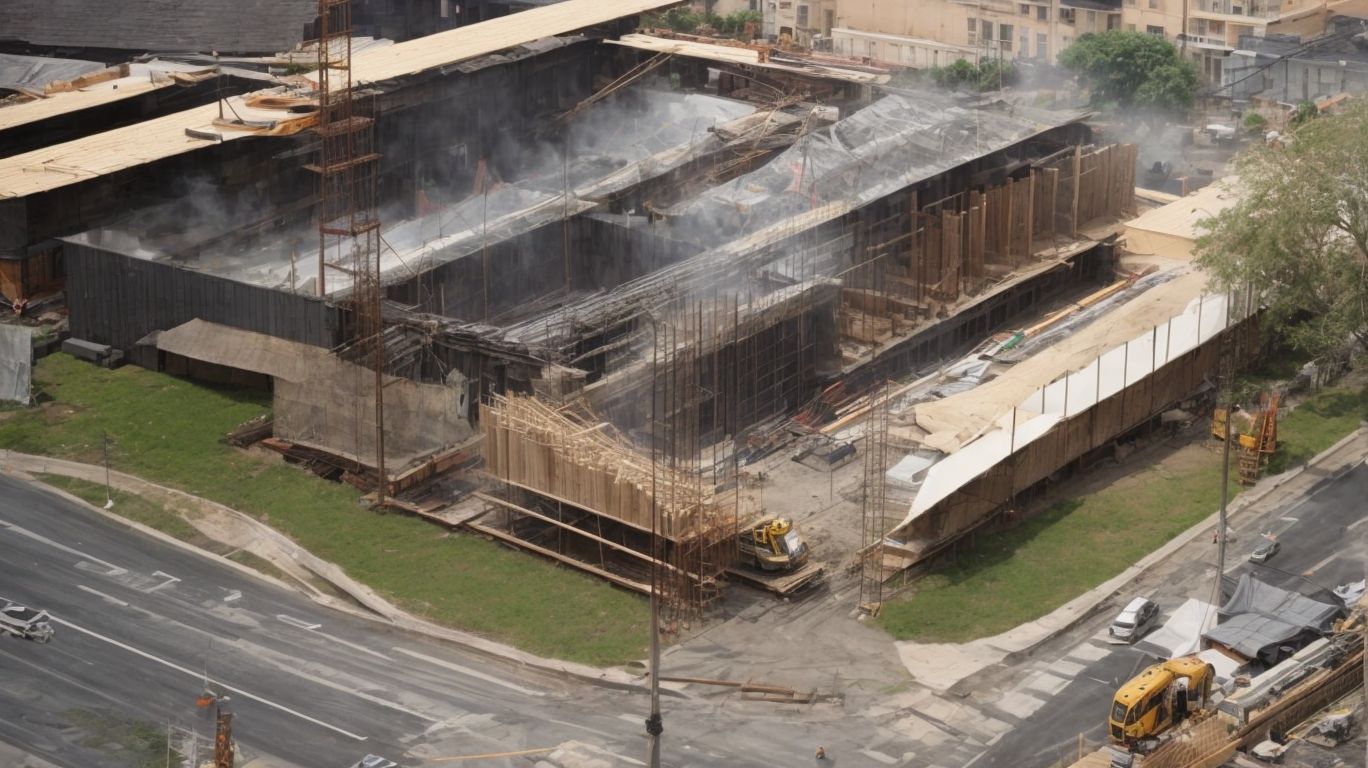
Exploring Financial Assistance Programs for Retrofitting
Are you considering retrofitting your home or property for energy efficiency and sustainability? If so, you may be wondering about the financial assistance programs available to help cover the costs.
In this article, we’ll delve into the benefits of retrofitting, the various financial assistance programs offered at the federal, state, and local levels, as well as the qualifications for eligibility. We’ll also explore the steps to apply for these programs and discuss alternative options such as low-interest loans and energy efficient mortgages.
Whether you’re a homeowner or a property manager, this guide will provide valuable insights into making your retrofitting project financially feasible.
What Is Retrofitting?
Retrofitting is the process of making changes to existing buildings or infrastructure to improve energy efficiency, reduce environmental impact, and enhance sustainability.
Retrofitting involves implementing modern, energy-efficient technologies and solutions. This can include upgrading insulation, windows, lighting, and HVAC systems.
By embracing these improvements, buildings can significantly lower their energy consumption. This results in reduced operating costs and carbon emissions. Retrofitting also promotes the smart use of resources, such as utilizing sustainable energy sources like solar panels or geothermal heating.
This transformation not only benefits the environment, but also creates a more comfortable and healthier indoor living and working environment for occupants.
What Are The Benefits Of Retrofitting?
The benefits of retrofitting encompass a wide range of advantages, including energy savings, reduced carbon footprint, and the promotion of sustainable development.
Retrofitting plays a crucial role in enhancing energy efficiency in existing structures. This includes reducing energy consumption and minimizing greenhouse gas emissions.
Additionally, retrofitting aligns with green building programs by fostering the use of energy-efficient technologies and sustainable materials. This creates healthier indoor environments and facilitates the adoption of energy conservation programs.
As a result, retrofitting leads to long-term cost savings and resilience against rising energy prices. These combined efforts contribute to a more sustainable and environmentally conscious approach to the built environment.
What Are The Financial Assistance Programs For Retrofitting?
Financial assistance programs for retrofitting offer funding, grants, and incentives to support retrofit projects and encourage the adoption of energy-efficient solutions.
These programs aim to alleviate the financial burden associated with retrofitting buildings and infrastructure to meet energy efficiency standards. By providing financial aid in the form of grants and incentives, organizations can access the necessary resources to undertake retrofit projects without substantial upfront costs.
Energy efficiency funding options help in covering the expenses related to equipment upgrades, insulation improvements, and other retrofitting measures. Such support plays a crucial role in promoting sustainable practices and reducing overall energy consumption.
Federal Programs
Federal programs for retrofitting provide financial assistance and support for energy-efficient upgrades, promoting the implementation of sustainable energy initiatives at a national level.
These programs aim to encourage homeowners, businesses, and organizations to invest in energy-efficient measures by offering retrofit grants, tax incentives, and low-interest loans. The objectives include reducing greenhouse gas emissions, decreasing energy consumption, and cutting utility costs.
Eligibility criteria typically involve demonstrating the need for upgrades, ensuring compliance with energy efficiency standards, and showing a commitment to long-term sustainability. The types of energy-efficient upgrades covered may include insulation, HVAC systems, windows, lighting, and renewable energy installations. By facilitating these initiatives, the federal programs contribute to a more environmentally friendly and economically efficient society.
State Programs
State programs for retrofitting offer funding and support for implementing energy efficiency measures, providing financial resources to facilitate building upgrades and energy conservation initiatives.
These programs are aimed at promoting sustainability by incentivizing the adoption of green building standards and sustainable energy solutions. Through state-level initiatives, homeowners and businesses can access retrofit funding options to improve energy performance, reduce carbon footprint, and lower utility costs.
By incorporating energy-efficient technologies and practices, these programs contribute to environmental preservation and pave the way for a more sustainable future.
Local Programs
Local programs for retrofitting offer assistance and financial support to promote energy-efficient upgrades and sustainable development within communities. These initiatives play a crucial role in facilitating the adoption of energy-efficient measures, reducing the carbon footprint, and enhancing the overall environmental sustainability of the area.
By providing financial relief and technical guidance, these programs empower eligible participants to undertake retrofit projects that not only benefit their own properties but also contribute to the collective effort of creating greener and more energy-resilient communities.
The impact of such assistance programs extends far beyond individual households, fostering a culture of sustainability and collective responsibility for environmental conservation.
How To Qualify For Financial Assistance Programs?
Qualifying for financial assistance programs for retrofitting is contingent upon meeting specific eligibility criteria, including income requirements, property eligibility, and the fulfillment of specific retrofitting needs.
Many programs have income thresholds to ensure assistance goes to those who need it most. Support levels may vary based on income. Property eligibility criteria can include location or type, and retrofitting needs may involve energy efficiency, safety, or accessibility. Meeting these requirements is crucial for those seeking financial support for retrofitting projects.
Income Requirements
Income requirements for financial assistance programs cater to the needs of low-income households, ensuring that those in need receive the necessary support for implementing energy-efficient upgrades and retrofit projects.
Energy efficiency programs are essential in promoting sustainable living and reducing the energy burden on low-income families. They provide access to funding options for retrofitting homes, empowering households to make environmentally friendly improvements. This not only leads to lower utility bills but also enhances comfort. These programs have income thresholds and eligibility criteria in place to ensure that assistance is directed towards those who need it the most, promoting equitable access to energy-efficient solutions.
Property Eligibility
Property eligibility criteria for financial assistance programs focus on promoting green building standards and ensuring that eligible properties align with sustainable energy initiatives and environmental regulations.
These criteria play a vital role in encouraging property owners and developers to integrate eco-friendly practices, such as efficient use of resources and renewable energy systems, into their construction and renovation projects.
By aligning with green building programs and sustainable energy initiatives, these properties contribute to a more environmentally responsible and energy-efficient built environment. Strict adherence to environmental regulations ensures that these properties not only receive financial assistance but also minimize their impact on the natural surroundings.
Specific Retrofitting Needs
Meeting specific retrofitting needs is a crucial aspect in qualifying for financial assistance programs, often involving energy audits, sustainability measures, and the identification of energy-efficient solutions tailored to individual requirements.
This comprehensive approach ensures that the proposed upgrades align with the unique energy consumption patterns and environmental footprint of the property.
By conducting energy audits, property owners can gain detailed insights into their current energy usage, enabling them to pinpoint areas for improvement. Incorporating sustainability measures not only reduces environmental impact but also enhances the long-term performance of the building.
Implementing energy-efficient solutions not only lowers operating costs but also positions properties for eligibility in various financial incentive programs that prioritize environmental responsibility.
What Are The Steps To Apply For Financial Assistance Programs?
Applying for financial assistance programs for retrofitting entails several key steps, including research and information gathering, completion of application forms, submission of required documents, and awaiting approval.
The first step in the process is to conduct thorough research on available financial assistance programs offered by government initiatives for sustainable development. This involves exploring various sources of information such as official websites, local government offices, and relevant organizations.
Once the suitable program is identified, the next phase is to carefully fill out the application forms, ensuring all required details and supporting documents are accurately provided. After completing the forms, the next vital step is compiling and submitting the necessary documentation as specified in the program guidelines.
Upon submission, applicants are typically required to await the approval process, which may involve a waiting period while the application is reviewed and assessed by the relevant authorities.
Research And Gather Information
The initial step in applying for financial assistance programs involves thorough research and information gathering, including the identification of available energy assistance programs, retrofit incentives, and funding options.
To fully grasp the benefits of energy assistance programs, it’s important to dive into their intricacies. Additionally, delving into retrofit incentives programs can uncover valuable information on improving energy efficiency. By researching financial options, one can identify the best funding resources for their specific energy-related needs or projects.
Fill Out Application Forms
Completing the necessary application forms is a critical step in the process of securing financial assistance for retrofitting. This requires providing detailed information on energy-efficient measures, retrofit projects, and energy performance.
Accurately outlining the specifics of energy-efficient measures is essential. This includes insulation upgrades, HVAC system improvements, and renewable energy installations.
To increase the chances of financial aid approval, it’s crucial to provide comprehensive details about the retrofit projects. This includes equipment upgrades, building envelope enhancements, and lighting efficiency.
Demonstrating the expected energy performance improvements resulting from the retrofit initiatives strengthens the application. This highlights reduced energy consumption, lower carbon emissions, and enhanced sustainability.
Submit Required Documents
Submission of the required documents is an essential phase in the application process for financial assistance. This ensures compliance with eligibility criteria, property documentation, and the verification of retrofit needs.
When applying for a program, certain documents like income verification, property ownership records, and retrofit needs assessments are essential in proving eligibility. Deeds and titles are necessary to confirm the property’s eligibility, while retrofit needs assessments provide insights into required upgrades.
Timely and accurate submission of these documents is crucial as they determine the level of financial assistance an applicant may receive.
Wait For Approval
Upon submission of the application and required documents, applicants are required to await the approval process. This involves the review of retrofit projects, eligibility verification, and the allocation of financial support.
During this waiting period, the financial assistance programs carefully assess each retrofit project to ensure it aligns with the program’s objectives and meets the necessary criteria. Simultaneously, the eligibility verification procedures are diligently carried out to confirm that the applicants qualify for the support.
Once these steps are completed, the allocation of financial assistance is based on the approved projects and the available funds within the program.
What Are The Alternatives To Financial Assistance Programs?
In addition to financial assistance programs, individuals seeking support for retrofitting can explore alternatives such as low-interest loans, energy-efficient mortgages, and home equity loans.
Low-interest loans can provide individuals with favorable terms and flexible repayment options, allowing them to invest in energy-efficient initiatives without placing a heavy burden on their finances.
Energy-efficient mortgages present a similar advantage by integrating the cost of energy upgrades into the mortgage, enabling homeowners to benefit from increased efficiency and lower utility bills.
Home equity loans offer the potential to leverage existing home equity to access funds for retrofitting, providing a convenient and cost-effective financing option for those looking to make sustainable home improvements.
Low-Interest Loans
Low-interest loans offer a favorable financing option for retrofitting, enabling individuals to pursue energy-efficient upgrades and sustainable improvements without incurring substantial interest costs.
Green building standards have a significant impact on empowering homeowners and businesses through loans. These loans offer access to affordable capital, making it possible for property owners to invest in comprehensive energy retrofits, increase efficiency, and decrease their carbon footprint. This aligns with the increasing focus on sustainable practices and promotes the adoption of eco-friendly structures, ultimately resulting in a more environmentally conscious and energy-efficient built environment.
Energy Efficient Mortgages
Energy-efficient mortgages present a specialized funding avenue for retrofitting, focusing on the integration of green technology and sustainable building upgrades through dedicated financial support.
Green mortgages provide borrowers with the option to finance energy-efficient projects while buying, refinancing, or renovating a property. This allows them to use their existing mortgage to upgrade the property’s energy performance.
These mortgages not only help homeowners save on utility costs but also promote environmental preservation through sustainable building practices. The availability of retrofit funding highlights the crucial role of energy-efficient mortgages in promoting energy conservation and sustainability in the real estate industry.
Home Equity Loans
Home equity loans offer a flexible financing solution for retrofitting, leveraging the equity of the property to support building upgrades, energy-efficient measures, and sustainability initiatives.
This form of financing allows homeowners to tap into the value of their property to fund essential improvements, such as installing solar panels, upgrading to energy-efficient appliances, or enhancing insulation.
By using home equity loans, individuals can make their homes more sustainable and reduce their carbon footprint, ultimately contributing to a healthier environment. This approach enables property owners to increase the value of their homes while promoting energy conservation and eco-friendly practices within their communities.




No Comments